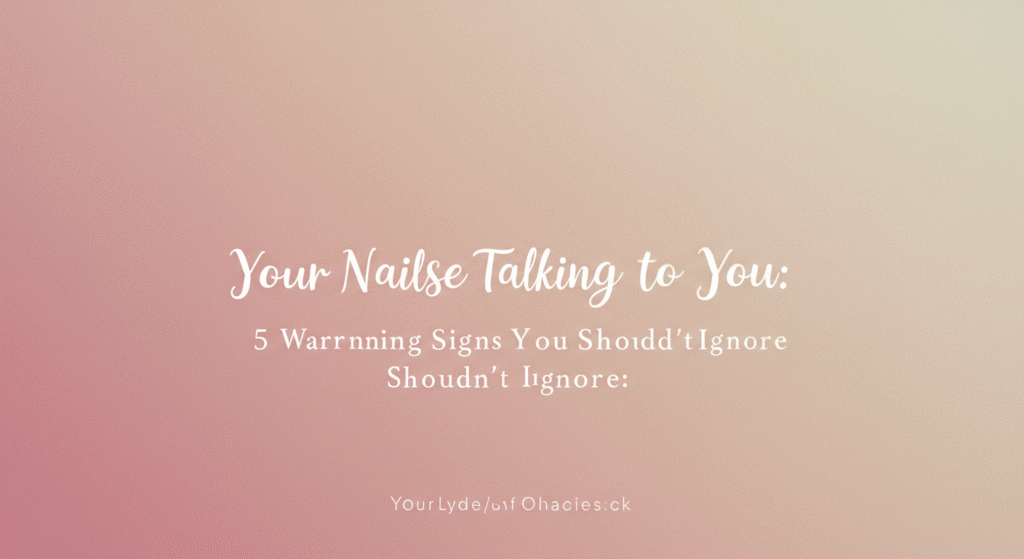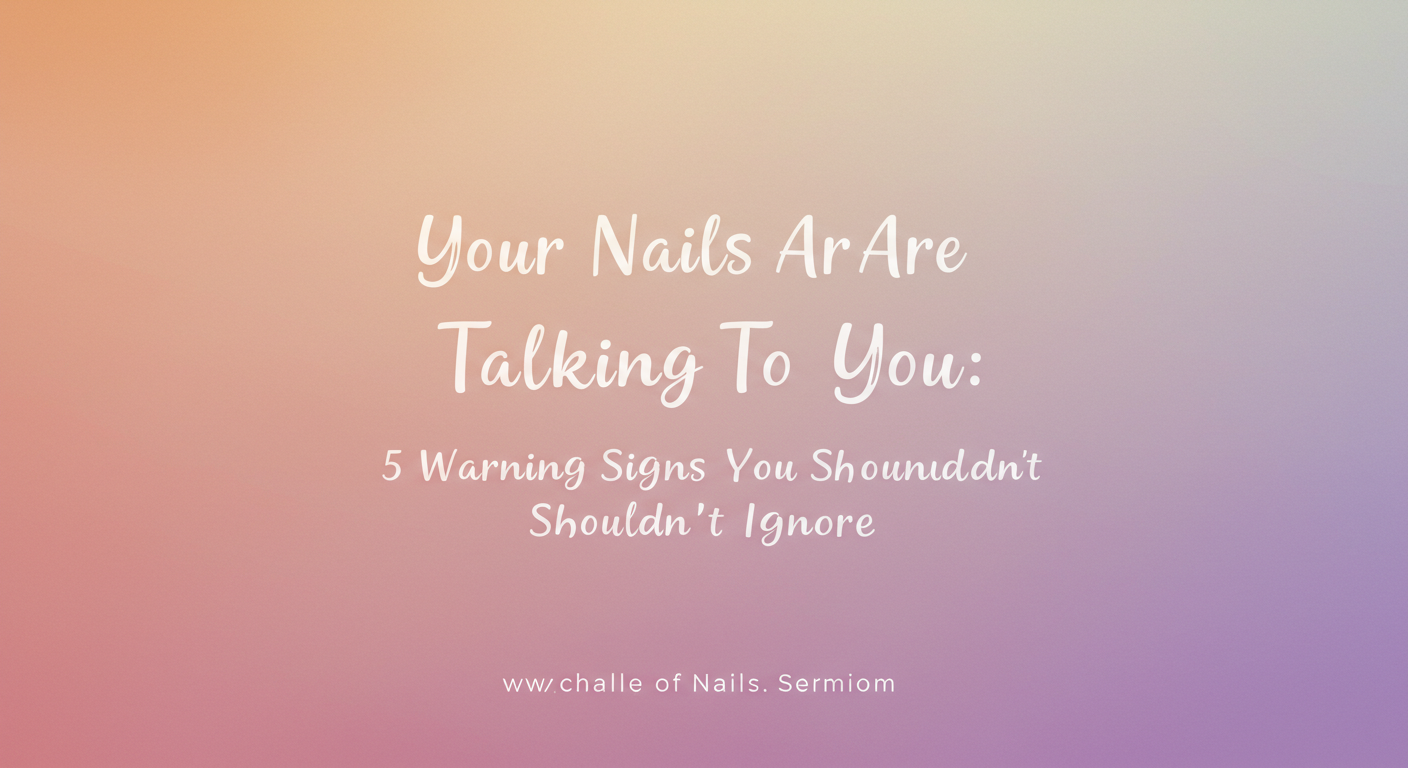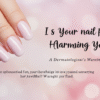Crooked or damaged nails may be a sign of these 5 problems
Yellowing of nails, flaky nails, cracks in nails, all these indicate your physical problems. If your nails also appear different from normal, then you should pay attention to it.
We all are often worried about the care of our hair, skin, digestion etc. But most people do not pay attention to their nails. You may be surprised to know that your nails can tell the condition of your health. Yes! Yellowing of nails, flaky nails, cracks in nails, all these indicate your physical problems. If your nails also appear different from normal, then you should pay attention to it (warning signs on the nail).
Today Health Shots has brought important information for all of you related to the changes seen on the nails. Also, in this article, it has been told, which physical problems can be indicated by the changes seen on the nails (warning signs on the nail).
These 5 warning signs on the nail may be a sign of physical problems:

1. Spoon-shaped nails
Also known as koilonychia, this condition causes soft nails to curl around the edges. It reflects many of your physical conditions. Iron deficiency anemia or hemochromatosis can be symptoms of a liver problem.
2. Pitting of nails
In this condition, small round pits or marks start appearing on the nails. This is common in people who have skin problems like psoriasis and eczema. Pits in the nails may be related to alopecia areata, an autoimmune disease that causes hair loss.
3. Yellow Nail Syndrome
In yellow nail syndrome, the nails thicken and grow slowly. This results in the nails taking on a yellowish appearance. Nails affected by yellow nail syndrome may lack cuticles and separate from the nail bed in places. This type of nail syndrome can be a symptom of lung disease that includes chronic bronchitis. Yellow nail syndrome may also be associated with swelling of the hands, arms, feet, and legs, a condition called lymphedema.
5. Separation of the nails
In a condition called onycholysis, the nail becomes loose and may separate from the nail bed. The separated part of the nail stains white, yellow or green. Sometimes detached nails are caused by an injury or infection.
In other cases, nail separation is the result of a reaction to a medication or certain types of products, such as nail hardeners or adhesives. Skin diseases such as thyroid disease and psoriasis, which also cause rashes with itchy, scaly patches, can lead to nail separation.
6. White spots or lines
White spots and marks on the nails are very common. Everyone must have experienced this at one time or another. In some cases, small white spots or lines on the nails can be a sign of a fungal infection, zinc deficiency, or other nutritional imbalances. Small white spots or lines on the nails can also be caused by an injury to the nail matrix or nail bed.
Note: All the organs of the body are connected to each other, if one organ is affected then the other organ gets affected automatically. Similarly, if there are physical problems, the shape, colour and texture of the nails can change. Therefore, these changes should not be ignored. However, medicines should not be taken based on the changes seen on the nails. First consult a doctor, take his advice and only then reach any conclusion.
FAQs: Warning Signs on Nails and Their Health Meanings
1. What do changes in your nails say about your health?
Changes in your nail color, texture, or shape can indicate underlying health problems.
For example:
- Yellow nails may signal lung issues or lymphedema.
- White spots can indicate zinc deficiency or fungal infection.
- Brittle, flaky nails may point to thyroid issues or nutritional deficiencies.
Tip: Never ignore nail changes. Consult a doctor to find the root cause.
2. What causes spoon-shaped nails (Koilonychia)?
Spoon-shaped nails, also known as Koilonychia, are soft nails that curve upward like a spoon.
Possible causes include:
- Iron deficiency anemia
- Hemochromatosis (excess iron buildup)
- Heart or liver disease
If you notice this condition, seek medical advice and get your iron levels checked.
3. Why do small pits appear on nails?
Pitting of nails refers to tiny dents or holes on the nail surface.
This is often linked to:
- Psoriasis – A skin condition causing scaly, itchy patches.
- Eczema – Chronic skin irritation.
- Alopecia areata – An autoimmune disorder that causes hair loss.
4. What is Yellow Nail Syndrome and why does it occur?
Yellow Nail Syndrome is a condition where nails become thick, slow-growing, and yellowish.
This condition may also cause:
- Lack of cuticles
- Nail separation from the nail bed
- Swelling of hands, feet, or legs (lymphedema)
Common causes include:
- Lung diseases, such as chronic bronchitis
- Poor lymphatic drainage
- Long-term systemic health conditions
5. What does nail separation (Onycholysis) indicate?
Onycholysis occurs when the nail detaches from the nail bed, often turning white, yellow, or green.
Causes include:
- Fungal or bacterial infection
- Injury or trauma to the nail
- Thyroid problems
- Psoriasis or other skin conditions
- Allergic reactions to nail products like adhesives or hardeners
Important: Keep nails clean and dry. Seek medical care if separation worsens or causes pain.
6. What do white spots or lines on nails mean?
White spots or lines on nails, also called Leukonychia, are common and usually harmless.
Causes include:
- Minor nail injury
- Fungal infection
- Zinc or calcium deficiency
- Allergic reactions to nail polish or chemicals
- Nutritional imbalance
If white spots persist or spread, consult a dermatologist to rule out underlying health problems.
7. When should I see a doctor about nail changes?
You should consult a doctor immediately if you notice:
- Sudden changes in nail color, shape, or thickness
- Nails detaching from the nail bed
- Persistent pain, swelling, or pus around nails
- Yellow, brittle, or crumbling nails that don’t improve
- Signs of systemic illness like fatigue or weight changes along with nail problems
8. Can nail problems be prevented with proper care?
Yes, good nail care can prevent many nail issues.
Prevention tips:
- Keep nails clean and trimmed regularly.
- Avoid harsh chemical nail products.
- Moisturize nails and cuticles daily.
- Wear breathable shoes to prevent fungal infections.
- Maintain a balanced diet rich in iron, zinc, biotin, and vitamin E.
However, some conditions like thyroid issues or psoriasis need medical treatment, not just home care.
9. Are nail changes always a sign of serious illness?
Not always.
- Minor nail changes like small white spots are often due to trauma or temporary nutrient deficiency.
- Persistent or severe changes, such as yellowing, thickening, or nail detachment, may indicate underlying health issues.
It’s best to monitor your nails and seek professional evaluation if symptoms worsen.
10. What nutrients are essential for healthy nails?
Healthy nails require a diet rich in essential vitamins and minerals, including:
- Biotin (Vitamin B7): Found in eggs, almonds, and whole grains
- Iron: Found in spinach, red meat, and lentils
- Zinc: Found in nuts and seeds
- Vitamin E: Found in avocado, olive oil, and leafy greens
- Protein: Essential for nail growth and strength
Drinking plenty of water is equally important to keep nails hydrated.
READ ALSO: Is Your Nail Polish Harming You? A Dermatologist’s Explain How
Was this helpful?
Your feedback helps us create better content
Thank you for your feedback!
Your input helps us improve our content.




